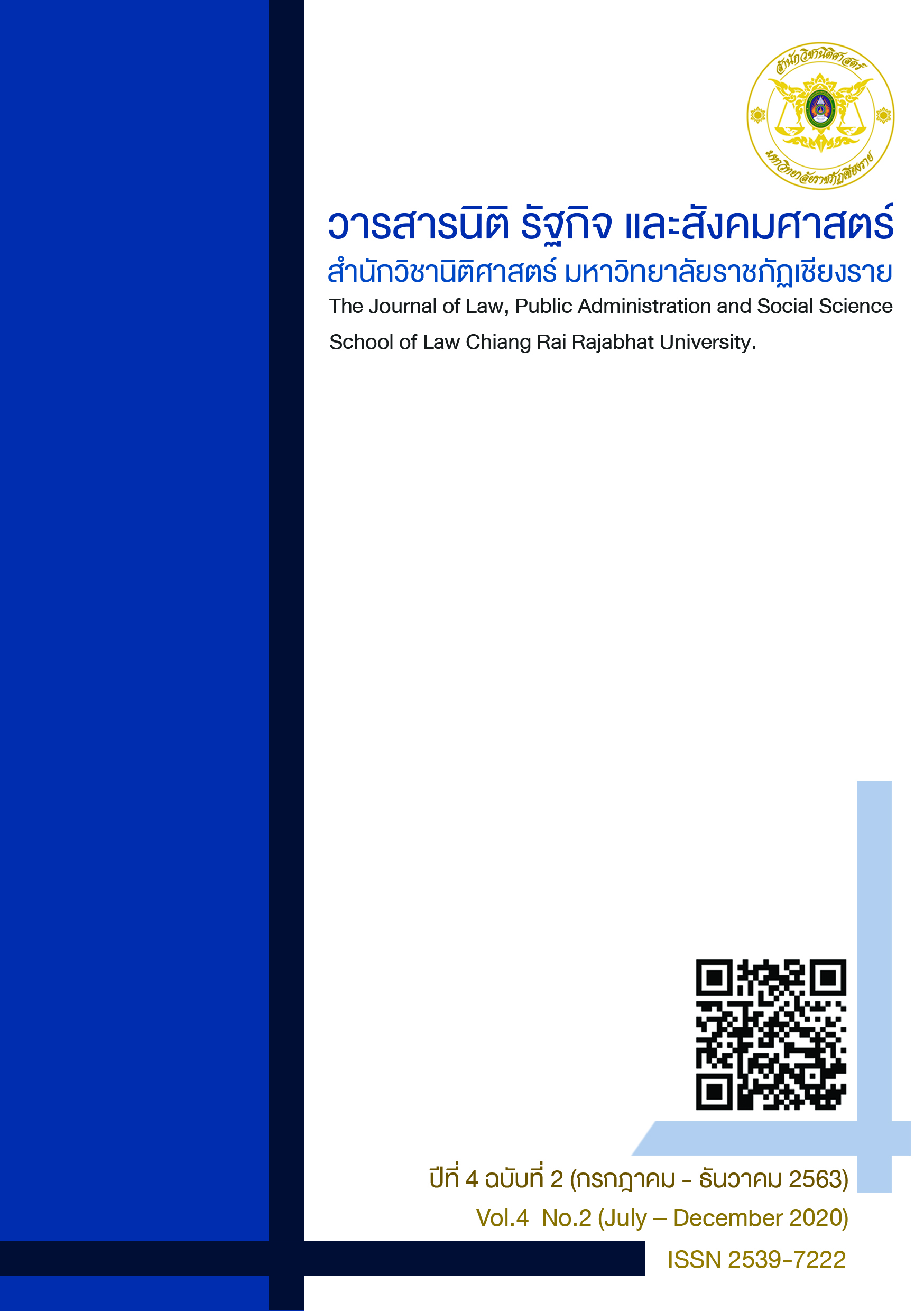History and Evolution of the UK Clean Air Act 1956 Thai
Main Article Content
Abstract
This academic article examines the history of London's Great Smog of 1952 and evolution of the UK Clean Air Act 1956, focusing on the growing range of legislative proposals to create several measures to reduce air pollution in cities employed and the increasing integration of the efforts of the numerous stakeholder parties. Specific emphasis is placed on the role of the city councils in the UK to establish Smoke Control Areas (SCAs) to improve air quality and their efforts in recent years to improve their own preparedness for understanding of the health and environment impacts of air pollution and that of clean air communities generally. Recently, air pollution becomes unpredictable and frequently occurred including in Thailand. The amount of dust, smoke and other gaseous air pollutants are difficult to predict, which local authorities in the local authorities should be prepared to respond at all times. There is an urgent need to reduce emissions from industries and businesses, as well as smoke from agriculture burning. The establishment of the Clean Air Law in Thailand might be able to promote knowledge and techniques that can reduce smoke emissions while encouraging the appreciation of clean air quality. This academic article also presents lessons learned from evolution of the UK Clean Air Act 1956, based on a structured review of the Act.
Article Details
References
Alastair Ball. (2018). The long-term economic costs of the Great London Smog. Working Paper. London: Birkbeck College, University of London.
Brimblecombe, P. (2006). The Clean Air Act after 50 years. Weather, 11 (61), 311-312.
Cambridge City Council. (2020). Smoke pollution, Retrieved April 21, 2020, https://www.cambridge.gov.uk/smoke-pollution
Chatterton, T. J., Longhurst, J. W.S., Hayes, E. T., Williams, W. B., Longhurst, J., Chatterton, T., Hayes, E. T., Williams, B. & Barnes, J. H.. (2016). Progress with air quality management in the 60 years since the UK clean air act, 1956. Lessons, failures, challenges and opportunities. International Journal of Sustainable Development and Planning, 11 (4), 491-499.
Davis, D. L. (2009). A Look Back at the London Smog of 1952 and the Half Century Since. Environmental Health Perspectives, 110(12), A734–A735.
Department for Environment, Food and Rural Affairs. (2012). The Future of the Clean Air Act. London: Department for Environment, Food and Rural Affairs.
E. M. Jones, C. Overy & E. M. Tansey. (2015). Air Pollution Research in Britain c.1955-c.2000, Retrieved April 21, 2020, from https://www.histmodbiomed.org/sites/default/files/W58LoRes.pdf
Encyclopedia of Britannica. (2020). Great Smog of London Environmental Disaster, England, United Kingdom [1952], Retrieved April 21, 2020, from https://www.britannica.com/event/Great-Smog-of-London
Friends of the Earth. (2017). The London smog and 1956 Clean Air Act: The 1952 London smog disaster spurred air pollution controls in Britain. But we need new laws for the 21st century, Retrieved April 21, 2020, from https://friendsoftheearth.uk/clean-air/london-smog-and-1956-clean-air-act
John Abbott, Christopher Conolly, Sally Cooke, Neil Passant, Robert Stewart & Anne Wagner. (2012). Assessment of the effectiveness of measures under the Clean Air Act 1993. London: Department for Environment, Food and Rural Affairs.
Lord Grey Academy. (2014). The History of Urban Air Pollution: A Brief Summary of Air Pollution History, Retrieved April 21, 2020, from https://www.lordgrey.org.uk/~f014/usefulresources/aric/Resources/Teaching_Packs/Key_Stage_4/Air_Quality/01.html
Mayor of London. (2002). 50 years on The struggle for air quality in London since the great smog of December 1952. London: Greater London Authority.
Meteorological Office. (2020). The Great Smog of 1952, Retrieved April 21, 2020, from https://www.metoffice.gov.uk/weather/learn-about/weather/case-studies/great-smog
Mosley, S. (2009). “A Network of Trust”: Measuring and Monitoring Air Pollution in British Cities, 1912–1960. Environment and History, 3 (15), 273-302.
Oxford City Council. (2020). Domestic Smoke Control Areas, Retrieved April 21, 2020, from https://www.oxford.gov.uk/info/20216/air_quality_management/216/domestic_smoke_control_areas
Stephen Mosley. (2017). Clearing the air: can the 1956 Clean Air Act inform new legislation?, Retrieved April 21, 2020, from https://www.historyandpolicy.org/policy-papers/papers/clearing-the-air-can-the-1956-clean-air-act-inform-new-legislation
UK Parliament. (1955). Air Pollution (Committee’s Report) HC Deb 25 January 1955 vol 536 cc38-42, Retrieved April 21, 2020, from https://api.parliament.uk/historic-hansard/commons/1955/jan/25/air-pollution-committees-report
WHO Regional Office for Europe. (2017). Evolution of WHO air quality guidelines: Past, Present and Future. Copenhagen: WHO Regional Office for Europe.
Williams, B. (2016). Sixty years since the 1956 Clean Air Act: Are we really doing enough to reduce air pollution?. The International Network of Environmental Forensics Bulletin, Volume 1, 1-6.


